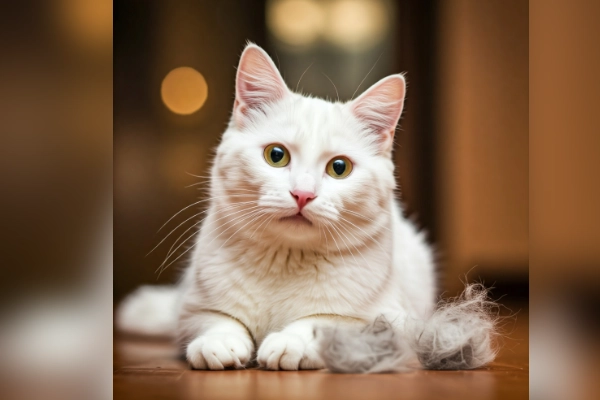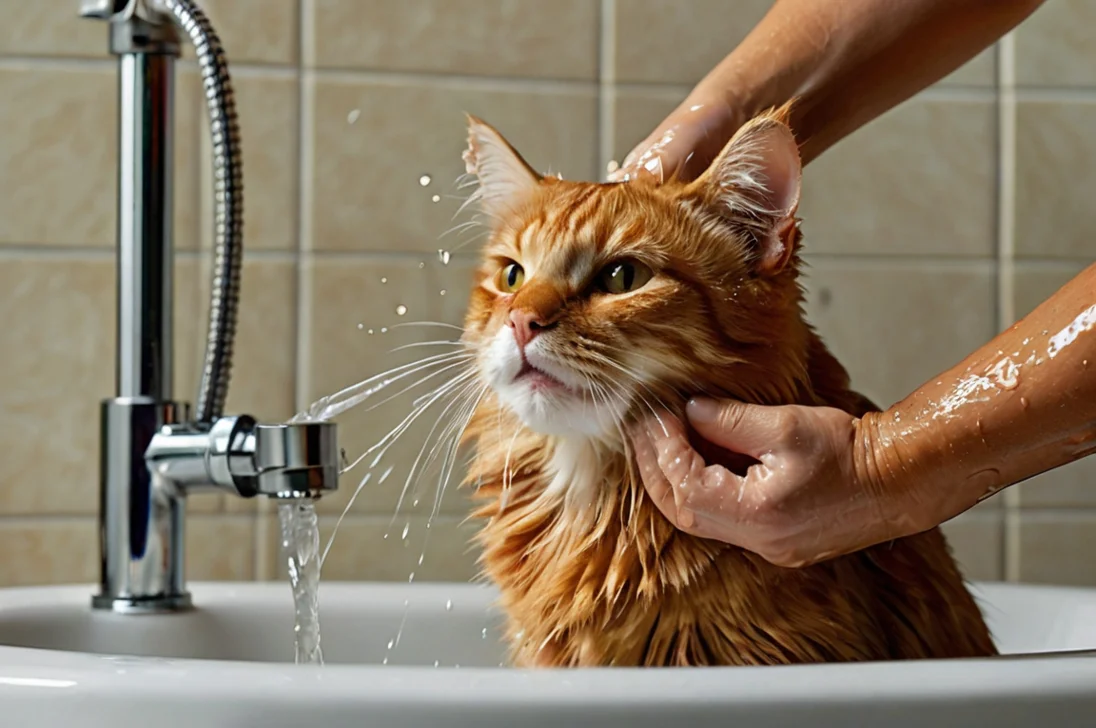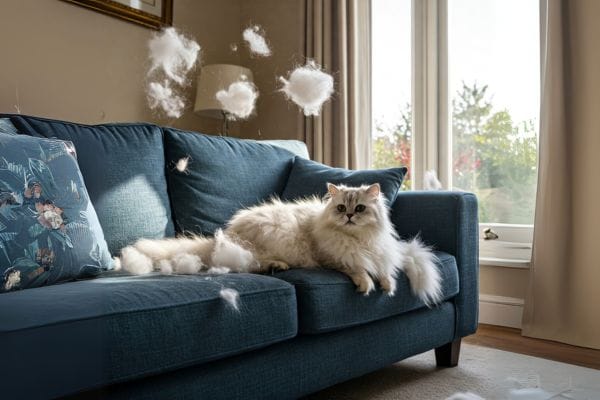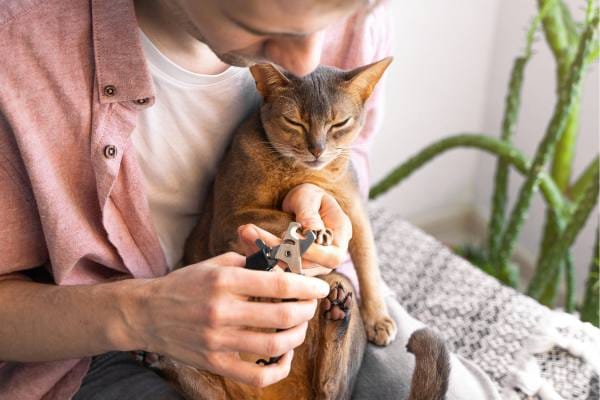Do you wonder about excessive cat shedding? Like many other animals, cats naturally shed their fur to maintain a healthy coat and regulate body temperature. This process, known as molting, typically occurs seasonally, with cats shedding more in the spring and fall
During this time, they release old or damaged hair, making way for new growth. However, some cats may experience excessive shedding, which can be a cause for concern. While some shedding is normal, excessive shedding can signal underlying health issues, such as skin allergies, hormonal imbalances, or parasites.
In this article, we will explore into the common causes of excessive shedding in cats and provide practical solutions to help manage the issue.
Understanding Normal Shedding in Cats
Seasonal Shedding
As the seasons change, so do a cat’s shedding patterns. In the spring and fall, cats tend to shed more than usual as they adjust to the changing temperatures and humidity levels.
This process is called “blowing their coat,” where they release their old fur to make way for a new, thicker coat that will help them regulate their body temperature in the coming season.
During these periods, you may notice an increase in loose hair around the house, but don’t worry – it’s a natural process!
Age and Breed Factors
A cat’s age and breed can also impact their shedding habits. Long-haired cats, such as Persians and Maine Coons, tend to shed more than short-haired breeds like Siamese and Abyssinians.
This is because long-haired cats have a thicker undercoat that sheds more easily. Additionally, senior cats may experience changes in their shedding patterns due to declining hormone levels or age-related health issues.
On the other hand, kittens tend to shed less than adult cats as their coats are still developing.
Stress and Shedding
While seasonal and genetic factors play a significant role in a cat’s shedding habits, stress can also cause short-term increases in shedding.
Excessive cat shedding also happens when a cat experiences stress or anxiety, their body releases hormones that can lead to excessive shedding. This could be due to changes in their environment, conflicts with other pets or people, or even medical issues.
If you notice that your cat experiences excessive cat shedding due to stress, try to identify the source of the stress and take steps to address it. With patience and proper care, your cat’s shedding should return to normal.
Common Causes of Excessive Cat Shedding

Poor Diet
A diet lacking essential nutrients can lead to dry skin and excessive cat shedding. Omega-3 fatty acids, for example, play a crucial role in maintaining healthy skin and coat.
Without sufficient omega-3s, a cat’s skin may become dry and flaky, leading to increased shedding.
Additionally, a diet deficient in vitamins and minerals can also contribute to skin problems, further exacerbating shedding. Ensuring your cat receives a balanced and nutrient-rich diet is vital for maintaining a healthy coat.
Allergies
Food allergies or environmental allergens can cause skin irritation and excessive cat shedding.
When a cat ingests an allergenic substance, its immune system reacts by releasing histamine, which can lead to itching, scratching, and inflammation of the skin.
This discomfort can result in excessive grooming, causing hair loss and shedding. Common allergens include beef, dairy, pollen, and dust mites. Recognizing and dealing with possible allergies may aid in reducing shedding problems.
Parasites
External parasites like fleas, mites, and ticks can lead to excessive cat shedding that indicates itching, scratching, and increased hair loss.
Flea allergy dermatitis is a common condition where flea saliva triggers an allergic reaction, resulting in intense itching and scratching.
Similarly, mites like Cheyletiella can cause intense itching and hair loss. Regular parasite control measures are essential to prevent these issues.
Medical Conditions
Underlying health problems can also contribute to abnormal shedding in cats. Hyperthyroidism, for example, can cause changes in coat texture and lead to excessive shedding.
Skin infections like ringworm or bacterial folliculitis can also cause hair loss and shedding.
It’s essential to work with a veterinarian to identify any underlying medical conditions that may be contributing to shedding issues.
Hormonal Changes
Hormonal imbalances can also affect a cat’s coat. Pregnancy or other hormonal fluctuations can lead to changes in coat texture and density.
Hormonal disorders like Cushing’s disease or hypothyroidism can also impact coat health.
In some cases, hormonal changes may cause excessive shedding or hair loss. Seeking advice from a veterinarian can assist in identifying whether hormonal imbalances are a major factor in shedding problems.
Solutions to Reduce Excessive Cat Shedding
Improve DIet
One of the most effective ways to reduce excessive shedding in cats is to improve their diet.
Feeding your cat high-quality, protein-rich food that contains omega-3 and omega-6 fatty acids can promote healthy skin and a shiny coat.
These essential fatty acids help to nourish the skin and coat, reducing the likelihood of excessive shedding. Look for foods that are rich in sources such as salmon, flaxseed, and sunflower oil.
Regular Grooming
Regular grooming is another crucial step in reducing loose fur and preventing excessive shedding. Brushing your cat regularly helps to remove loose hair, distribute skin oils, and prevent matting.
When grooming short-haired cats, choose a soft-bristled brush or rubber grooming glove. For long-haired cats, use a slicker brush or pin brush to gently detangle their fur.
Regular grooming can also enhance the bond between you and your cat.
Control Parasites
Controlling parasites is essential in preventing excessive shedding. Regularly inspect your cat for signs of parasites.
Use topical treatments or oral medications as directed by your veterinarian. Additionally, keep your home clean by vacuuming regularly and washing your cat’s bedding frequently.
Reduce Stress
Provide a calm environment by minimizing changes in your cat’s routine. You can also use pheromone diffusers specifically designed for cats.
Provide plenty of hiding places, vertical space, and scratching posts to help your cat feel secure and relaxed.
Consult a Vet
Consult with a veterinarian for a checkup. Excessive shedding can be a sign of underlying health issues such as allergies, thyroid problems, or skin conditions.
Your veterinarian can rule out any health problems and guide the best course of action to address your cat’s shedding.
How to Maintain a Healthy Coat
Proper Hydration
Keeping your cat hydrated is crucial for maintaining healthy skin and reducing shedding.
Adequate water intake helps to flush out toxins and keep the skin’s natural moisture barrier intact.
Encourage your cat to drink more water by placing multiple water sources around the house, using a water fountain, or adding a small amount of tasty liquid to their food.
Supplements for Skin and Coat
Supplements can help support healthy skin and a shiny coat. Fish oil, rich in omega-3 fatty acids, is an excellent choice as it reduces inflammation and promotes healthy skin cell growth.
Other beneficial supplements include vitamin E, zinc, and biotin. Consult with your veterinarian before adding any supplements to your cat’s diet to ensure the right dosage and compatibility.
Regular Vet Check-ups
Regular vet check-ups are crucial for monitoring your cat’s skin and coat health.
Your vet can identify issues early, such as allergies, fleas, or parasites, and provide guidance. Schedule annual check-ups, or more if needed.
Catching issues early can prevent minor problems from becoming major concerns and keep your cat’s coat looking its best.
In conclusion, while shedding is a natural part of your cat’s life cycle, excessive fur loss can indicate health concerns that should not be overlooked.
By being attentive to your cat’s grooming habits, diet, and overall condition, you can help ensure their well-being and comfort.
If you notice signs of excessive shedding, such as bald patches or changes in skin condition, don’t hesitate to consult with your veterinarian for a thorough check-up.
Remember, a healthy cat is a happy cat! Take a proactive approach to your furry friend’s health and make an appointment with your vet today. Your cat will thank you for it!




